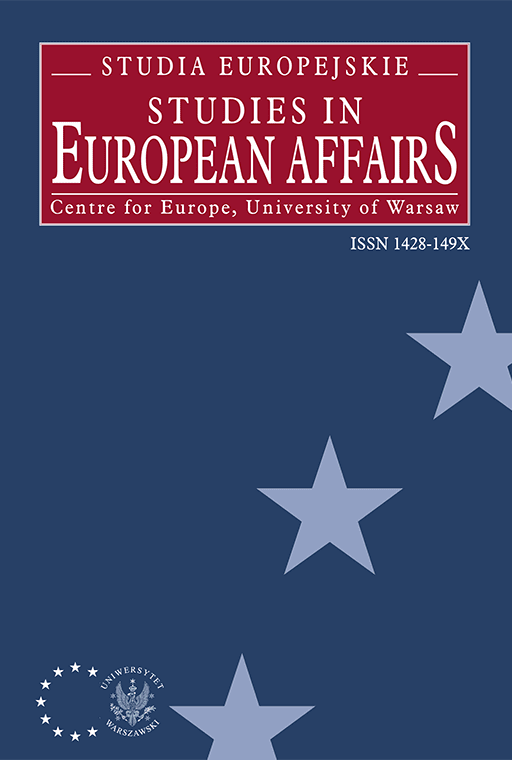
ISSUE: 3/2006
- Volume 39
- Number 3
- 2006
Subscribe NEWSLETTER
Studia Europejskie –
Studies in European Affairs
ISSN: 1428-149X
e-ISSN: 2719-3780
License
Articles published in the journal are under a Creative Commons Attribution – Non Commercial – No Derivatives 4.0 International License
Środki restrykcyjne jako instrument Wspólnej Polityki Zagranicznej i Bezpieczeństwa Unii Europejskiej
Restrictive measures as a CFSP instrument
Abstract
Restrictive measures (sanctions) applied by the European Union against third countries have recently evolved as one of the key instruments of the EU Common Foreign and Security Policy (CFSP). In fact, we are witnessing the emergence of the EU’s autonomous sanction policy reaching far beyond the implementation of the UN Security Council’s sanctions. At the same time, the EU’s sanction policy is quite peculiar, both in terms of its purposes and its institutional framework. Legally, „the EU sanctions” are not applied on behalf of international community (as is the case of the UN sanctions). Moreover, their legal basis in the universal international law can be put in question, especially in the light of Chapter VIII of the United Nations Charter. On the other hand, they can be regarded as measures similar to unilateral restrictions (retaliations) or – more specifically – as a special sort thereof, considering they are applied in order to promote a EU-sponsored universal „States’ Code of Conduct”, including, especially, respect for democracy and human rights, rather than in response to infringement of international rights or the EU’s interests. As regards setting of these measures in the European legal order, their legal basis is double-layered: political measures rely upon provisions of Article 15 of TEU, while the economic ones – upon Article 301 of TEC, with both the Commission and Member States playing significant roles in their enforcement. As one observes their political evolution, it is obvious they have been used, so far, to punish lack of democracy, of respect for human rights and rule of law in third states, rather than due to security-related reasons or to fight terrorism (the UN being the principal actor in the latter area). This held true in the case of the original sanctions (against Soviet Union, in 1981) and has remained true today. Geographical coverage has not been restricted to the EU’s closest neighbourhood either: in fact, such remote countries as China, Burma/Myanmar, Sudan, Zimbabwe etc. have been under scrutiny, too. The policy’s favourite instrument is an arms embargo, recently complemented with „smart sanctions”, targeted against State leaders or regime-related companies. The EU sanctions are likely to become an even more efficient instrument
of the CFSP in the future, and as the CFSP itself is probably going to become a sole example of an external policy applied by a regional community for nonegoistic purposes, to promote a specific vision of international and domestic order.
Language: Polish
Pages: 9-31
How to Cite:
Harvard
Kobza, P. (2006) "Środki restrykcyjne jako instrument Wspólnej Polityki Zagranicznej i Bezpieczeństwa Unii Europejskiej". Studia Europejskie – Studies in European Affairs, 3/2006, pp. 9-31.